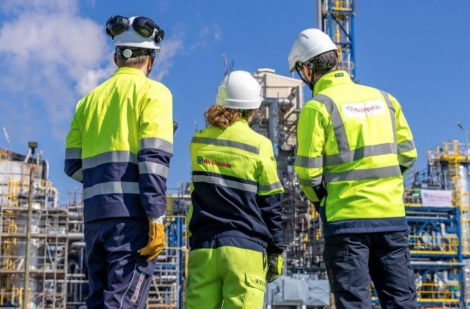-
Air Liquide commissions ammonia cracking pilot unit at Antwerp
Date posted:
-
-
Post Author
Tracey Biller
-

Air Liquide has commissioned an industrial-scale ammonia cracking pilot unit with a 30 tonne per day ammonia to hydrogen conversion capacity at the Port of Antwerp-Bruges in Belgium.
Efficient transport of hydrogen over long distances is a significant obstacle to developing a robust global hydrogen economy. Ammonia (NH3), formed by hydrogen and nitrogen molecules, is an ideal hydrogen carrier and can be cost-effectively produced in regions rich in renewable energy sources, such as solar, hydro, and wind. A well-established global infrastructure already exists for the large-scale production, transportation, and use of ammonia. The move by Air Liquide will allow ammonia transported by ship to be cracked on site, enabling wide access to low-carbon and renewable hydrogen for the decarbonisation of industry and mobility.
Writing for the publication HView, Edward Laity says Belgium is positioning Antwerp-Bruges as a future hydrogen import hub, with the port authority already having outlined plans to handle large volumes of ammonia-based hydrogen carriers as part of its wider hydrogen corridor strategy.
Said Armelle Levieux, member of Air Liquide’s Executive Committee, “The commissioning of our ammonia cracking pilot unit in Antwerp is a key milestone. This is a world first which paves the way for new low-carbon hydrogen supply chains. By proving the viability of industrial-scale ammonia cracking, Air Liquide demonstrates its capacity to innovate and contribute to the energy transition.”
